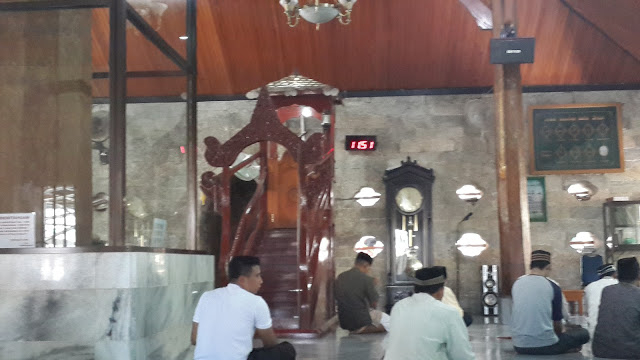Palopo Mosque
There is an opinion that visiting Palopo City will not be officially regarded Palopo before touching the main beam of Old Palopo Mosque which is made of Cinaduri wood, and the wall that is made of the mixture of egg white. That is why, the mosque always has many visitors, especially in Ramadhan (the fasting month in Islam). In Ramadhan, after dhuhur until around the time for breaking the fast, usually people keep staying in the mosque to learn the Koran, recite the Koran in turns (tadarrus), and chant confession of faith repeatedly (dzikr). The visitors are not only the citizens of Palopo city, but also from nearby districts, such as Luwu district, North Luwu district, Sidrap district, and Wajo district.
The mosque has gone through a few renovations. Nevertheless, the architecture does not change a lot. To preserve it, the local government has planned fund in ABPD (annual regional government monetary plan) every year, for paying employees, Islamic scholars, and three imams (leader of communal prayer). Beside receiving honorarium, the employees of the mosque also receive clean water facility from the local government without any charge.
The architecture of the Old Palopo Mosque is very unique. There are four main elements attach to the construction of the mosque, Bugis, Java, Hindu and Islam.
The first is the local Bugis element. This element can be seen at the whole structure of the building which consists of three storeys, just like the concept of stage house. The three storeys building concept is also consistently applied to the other parts, such as roof and the decoration comprising three stacks; supporting beams that also consists of three stacks, pallanga (pedestal), alliri possi (main beam) and soddu; three stacks wall with serrations; and the colouring of the beams (green, white, and brown stacking from up to down).
Second, Javanese element. It can be seen on the roof, which is influenced by traditional Javanese houses‘ roof (Joglo). It shapes three stacks/layers pyramid or is often called tajug. The two lower layers are supported by four beams which are often called sokoguru in the Javanese construction. In addition, the top layer is supported by single pillar of cinna gori wood (Cinaduri) with the diameter 90 centimetres. At the top of the roof, there are blue ceramic ornaments that probably came from China.
Third, Hindu element. This element can be seen through the mosque which has square shape, as the influence of Hindu temple construction. On the lower part of the wall, there is a lotus motif just like the one in the Borobudur Temple. The upper wall has also the same motif as Hindu temple in Java Island.
Fourth, Islamic element. The element can be seen through the windows which have five straight iron bars for each window. They symbolize the amount of salaat that a Moslem has to do in a day.
Palopo Mosque Location
The Old Palopo Mosque is located in Palopo City, South Sulawesi Province, Indonesia.The city of Palopo is located 390 km north of Makassar city. To get to Palopo from Makassar, people can drive private vehicles or public transportations (cars: panther, kijang, and bus).












0 comments:
Post a Comment